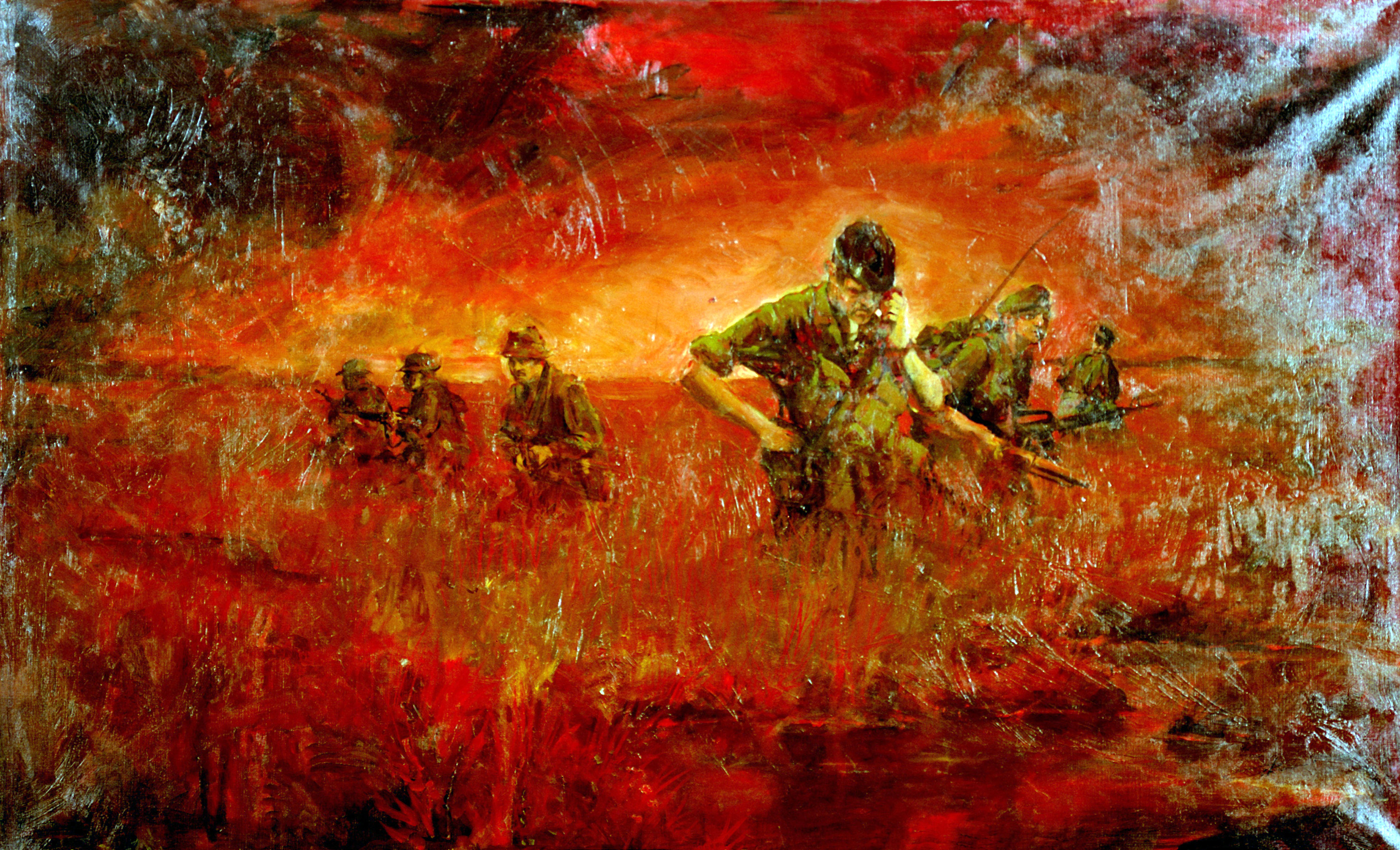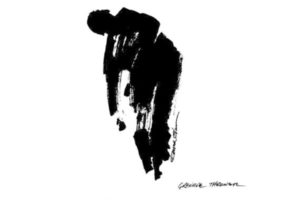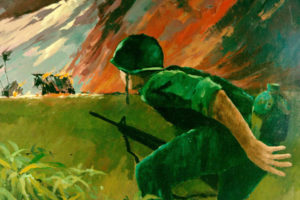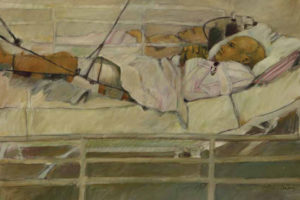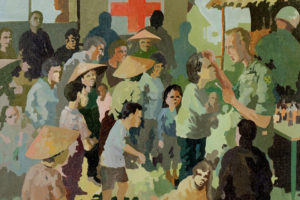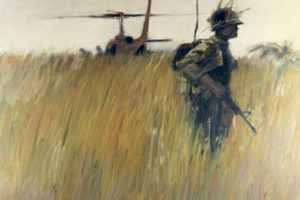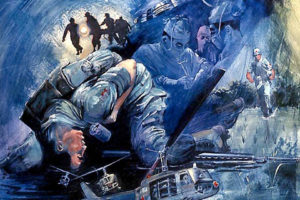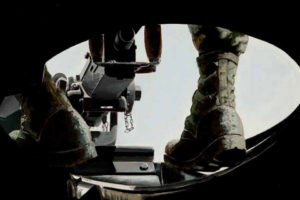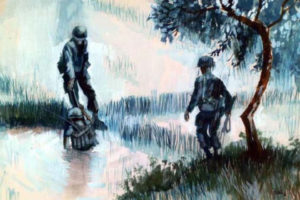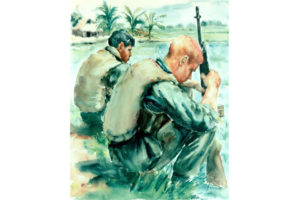Since World War I, the U.S. Army had officially commissioned artists to sketch, draw, photograph, and paint what they saw on the frontlines. Other branches have deployed their own respective programs throughout the 20th and 21st century.
Established in 1966, the Army Vietnam Combat Artist Program was a further extension of the U.S. government’s desire to provide a visual narrative for civilians and soldiers alike.
“It’s different than a writer, a poet, or a photographer,” James Pollock, a U.S. Army combat artist who was in the Combat Art Team (CAT), told the National Archives. “It’s just another window into the history of a war.”
Although the program ended in 1970, for four years nine total CAT teams deployed to Vietnam on 60-day rotations capturing patrols, life-saving surgeries, and the daily lives of young GIs.
“I saw a beautiful country, culture and people caught up and entangled in a complicated war. I saw in the people a great strength and resilience….” Robert Knight recalled in In the Line of Duty: Army Art, 1965-2014. “The overall Vietnam experience introduced me to the harsh reality of war first hand. I saw the every day images of war through the poverty, pain, fear, and frustration and loss of lives that it creates. I also saw the difficult and dangerous situations that our soldiers found themselves in.”
Presently, the U.S. Army’s art program has archived over 15,000 pieces of art, from World War I to the War on Terror.
*All images courtesy of the National Museum of the U.S. Army

